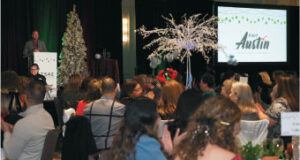Communications Benchmarking: So Where Do We Stand?


Move over clutter, and make way for a new struggle: communicating member benefits effectively.
For the first time in the six-year history of the Association Adviser Communications Benchmarking Study, associations report a new No. 1 pain point – one that has more than doubled (from 32 percent in 2011 to 68 percent in 2017) in its ranking as a communication challenge.
Additional 2017 study findings reflect many moving parts in the association communications world, from trying to pinpoint the perfect means to relate with young professionals, to utilizing new communications technologies and finding the just-right frequency for communicating.
As is true with any survey, bad news often presents itself through raw data. The challenge for associations is taking that raw data and turning it into actionable communication strategies – a daunting, but not impossible, task.
Communicating Member Benefits Effectively
Several of the Top 5 communication challenges could serve as reasons why associations find it more difficult than ever to effectively communicate member benefits. “Combating information overload/cutting through the clutter” remains a significant challenge (No. 2 in the 2017 survey), and “customizing for member segments” ranked No. 4 in the survey. Those issues go hand in hand in many ways, allowing member benefit communications to fall flat.
Utilizing the Take AIM (Assess, Integrate and Measure) approach provides associations an opportunity to maximize communication effectiveness and clearly illustrate the incredible value inherent with association membership. In the assessment category, this year’s survey revealed a positive trend (50 percent) of associations surveying members specifically about communication needs every 12–24 months, yet, interestingly only 17 percent reported having a good understanding of their reader, member and advertiser needs. Integration remains a struggle, with just 28 percent of respondents giving themselves at least a four out of five rating on how well they perform this essential task, and just two out of five respondents noted they need to improve their ability to measure integration across all platforms.
Communication Customization
Without fail, each association has that one member who asks to be removed from conference email lists then complains that he was not aware of the upcoming conference. Some associations also blindly send eblasts about every part of their membership offering to every single member without trying to segment based on membership type. The customization struggle is real.
Technology is not being fully leveraged to create a customized member experience, as only one in three respondents noted effectively utilize their AMS to carry out this task. Just three of five respondents customize for any segment of professionals, and only 20 percent reported utilizing their career center, content management system, learning management system or marketing automation system to deliver a customized experience.
On a positive note, based on 2016 study results, associations have improved in their usage of these technology tools to better communicate with member subgroups.
Communications as a Non-Dues Revenue Driver
Generating non-dues revenue from communications continues to pose a significant challenge for associations. Although fewer respondents reported non-dues revenue earnings to be a problem this year (41 percent) vs. 2016 (54 percent), looking back to 2011, just 11 percent of survey respondents reported obstacles with non-dues revenue generated by communications. Clearly, while the 13 percentage-point increase is an incredible feat, there is room for improvement.
Considering the Take AIM approach, and based on additional survey results, a non-dues-revenue solution may be more clear with a better assessment of what industry suppliers find valuable. According to the survey, only two in five respondents check in with their sponsors once a year to gauge the return on their communications investment, and only 15 percent of respondents indicated they have a fully customized offering for their sponsors.
Portfolio of Platforms
Traditional conferences and events held its ranking as the top communication channel (87 percent of respondents find them very/extremely valuable); followed by the print magazine (68 percent); eNewsletter (66 percent); webinars (63 percent); and leadership development events (63 percent). Virtual events doubled its value number (to 34 percent), and appointment-setting events moved into the fray with respondents rating them 35 percent.
Additional communication platforms ranked as follows (rating as very/extremely valuable perceived value to members): private online communities (44 percent); apps (37 percent); blogs (28 percent); and Instagram (19 percent). The final three ranked platforms were new to this year’s study, and provided some interesting thought about how associations are reaching members. Seventeen percent of respondents are utilizing text messaging; 13 percent offer podcasts; and 6 percent use Snapchat.
Engaging Young Professionals
Many associations continue searching for that special sauce that drives young member engagement. This year’s study delved into this area a bit, with positive response (hint: social media is not necessarily the answer). Associations reported that their best tactics for engagement success are: invitations to participate on volunteer committees (57 percent); creating events specifically for their age group (56 percent); creating targeted communications (51 percent); and offering mentoring programs (36 percent).
Offering leadership development events for young professionals also made a strong showing this year, with 63 percent of respondents giving these events a very/extremely important rating, an 11 percent increase over 2016.
Clearly, great strides are being made in the association communications world, and at the same time, challenges remain. Regularly taking AIM (Assessing member needs, Integrating communications across all platforms and Measuring effectiveness) is the first step toward creating a communications strategy that engages members at every stage of their career.
Take the Survey to Learn Your Score!
Visit communicationsbenchmark.naylor.com to complete the survey.
Jill Andreu is Naylor’s vice president of content and strategic partnerships. She can be reached at [email protected] or 352-333-3363.
Photo credit: tostphoto/Shutterstock.com




